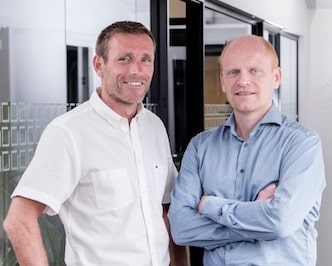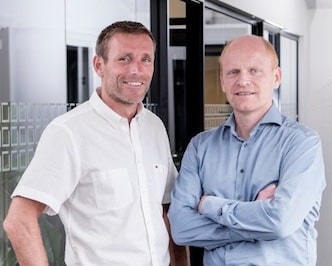Improve Surface Energy | Compare Corona & Plasma
What is surface energy, and why is it important to have high surface energy when bonding prints on surfaces?
In materials science, surface energy is the work associated with creating an interface between two different phases.
For example, when a drop of water is placed on a table, the water will spread until the surface tension is equalized. This equalization of surface tension requires work, which is given by Surface Energy.
In general, it takes less work to create an interface between two materials with similar chemical composition and structure. This is why it is important to have a high surface energy when bonding prints on surfaces – it creates a stronger bond between the print and the surface.
Surface energy can also be used to calculate the wetting angle, which is the angle at which a liquid will make contact with a solid surface. The wetting angle is determined by the ratio of the surface energies of the liquid and solid. A high surface energy indicates that the liquid will wet the solid (i.e. make contact), while a low surface energy indicates that the liquid will not wet the solid.
The wetting angle is important for many applications, such as painting and coating, where it determines how well the paint or coating will stick to the substrate.
The article continues below the video “What is Surface Energy?”.
What are the three most common surface treatments used to improve the surface energy of materials – corona treatment, and plasma treatment?
Surface energy is the force that determines how well a material will interact with another material. In order to improve the surface energy of a material, it is necessary to alter the molecular structure of the surface so that it is more compatible with other materials.
There are several different methods that can be used to improve surface energy, including corona treatment, and plasma treatment.
Corona treatment is another popular method of surface treatment. In this process, an electrode is used to generate an electrical field around the material. This field breaks down the molecules on the surface of the material, which then reforms into a more compatible structure.
Plasma treatment is a similar process, but instead of using an electrical field, plasma is used to break down the molecules on the surface of the material. The resulting reformed surface has improved compatibility with other materials.
The article continues below the video “What is the difference between Corona and Plasma?”.
What are the benefits of using a surface treatment to improve the surface energy of materials?
Some benefits of using a surface treatment to improve the surface energy of materials include:
- Increased wettability: Surface treatments can increase the wettability of a material, making it more likely to interact with other substances. This can be beneficial for applications where adhesion or bonding is desired.
- Enhanced durability: Surface treatments can improve the durability of a material by increasing its resistance to wear, tear, and other forms of damage.
- Improved aesthetic appeal: Surface treatments can give materials a more polished and attractive appearance. This can be beneficial for products that will be on display or in use in public spaces.
4. Enhanced functionality: Surface treatments can improve the functionality of a material by making it more resistant to environmental factors such as heat, light, or chemicals. This can be especially beneficial for products that will be used in harsh or difficult conditions.
How to measure surface energy?
There are several different ways to measure surface energy, but the most common method is through contact angle analysis. This involves measuring the angle at which a liquid makes contact with a solid surface. The higher the surface energy of the material, the lower the contact angle will be.
This means that the liquid will wet the surface more readily, indicating a stronger interaction between the two materials. Another way to measure surface energy is through work of adhesion testing.
This involves measuring the force required to separate two materials that have been bonded together.
The higher the surface energy of the material, the higher the work of adhesion will be. This indicates a stronger bond between the two materials.
Comparing the methods of improving surface energy
There are several factors that can be considered when comparing the three methods of improving surface energy. These include:
- Effectiveness: All methods are effective at improving the surface energy of materials.
However, plasma treatment is generally considered to be the most effective method.
Plasma and Corona treatment is generally considered to be the most effective method because it is able to break down the molecules on the surface of the material more effectively than other methods.
This results in a reformed surface with improved compatibility with other materials.
- Safety: Flame treatment involves the use of open flames, which can be dangerous. Corona treatment and plasma treatment do not involve the use of open flames, making them safer options.

Solving your adhesion problems
We have more than 50 years of experience in delivering and manufacturing quality, high-end surface treatment products for any industry.
Tantec has both standard machines, but also custom-designed machines.
Contact us today and get a quote. We are standing by to service you.
Which method is best for your application
It will depend on your specific needs and requirements. all three methods can be effective at improving the surface energy of materials. However, plasma treatment is generally considered to be the most effective method.
If safety is a priority, then corona treatment or plasma treatment may be better choices. If time is a factor, then corona treatment may be the best option.
Ultimately, the best method for your application will depend on your specific needs and requirements.

Solving your adhesion problems
We have more than 50 years of experience in delivering and manufacturing quality, high-end surface treatment products for any industry.
Tantec has both standard machines, but also custom-designed machines.
Contact us today and get a quote. We are standing by to service you.
Solving your adhesion problems
We have more than 50 years of experience in delivering and manufacturing quality, high-end surface treatment products for any industry.
Tantec has both standard machines, but also custom-designed machines.
Contact us today and get a quote. We are standing by to service you.


Solving your adhesion problems
We have more than 50 years of experience in delivering and manufacturing quality, high-end surface treatment products for any industry.
Tantec has both standard machines, but also custom-designed machines.
Contact us today and get a quote. We are standing by to service you.
Surface treament FAQ
Can I treat 3D objects with plasma?
A plasma treatment is the ideal solution for your 3D parts because plasma gets almost everywhere. Therefore, it can cover regions of your parts which cannot be reached by traditional treatment methods. You can even treat the inside of small parts like syringes or the inside of a closed plastic bag.
Feel free to send us a sample of your part and explain your project to us – we will then conduct a free test of your part in our in-house testing facilities and advise you in the best possible treatment solution!
Can the treatment be limited to certain parts of an object?
Theoretically, we could limit a treatment to certain regions by covering parts of an object. However, a plasma treatment usually does not have any negative side-effects for the treated object so in most cases, there would be no reason to do so.
How do I evaluate the success of a plasma treatment?
We provide different measurement techniques including surface energy test inks and pens as well as contact angle measurements to measure the effectiveness of your plasma treatment. Do not hesitate to get in touch with our experts, so we can help you find the most effective treatment for your individual demand!
Is in-line treatment possible?
Of course. We supply both standalone plasma treaters and in-line plasma treaters, which can easily be integrated into your existing production process. Do not hesitate to contact our experts to discuss how a plasma treatment can be integrated into your existing production line!
Which sizes can be treated?
We offer treatment solutions for almost any size. Smaller parts are often placed on trays, so that many parts can be treated simultaneously.

